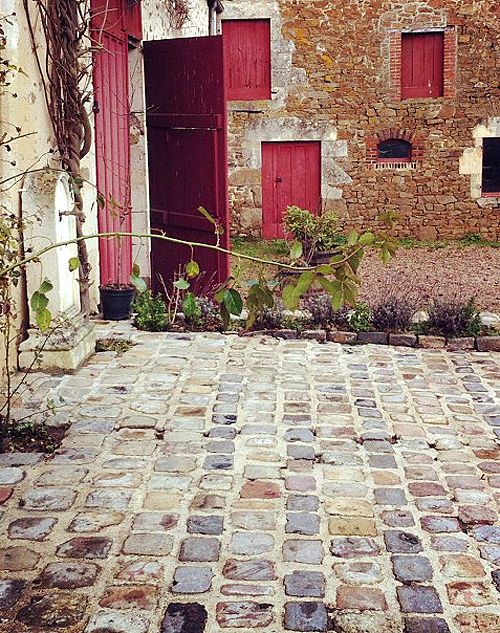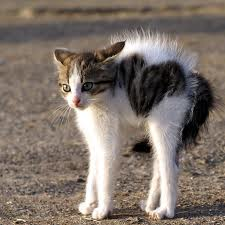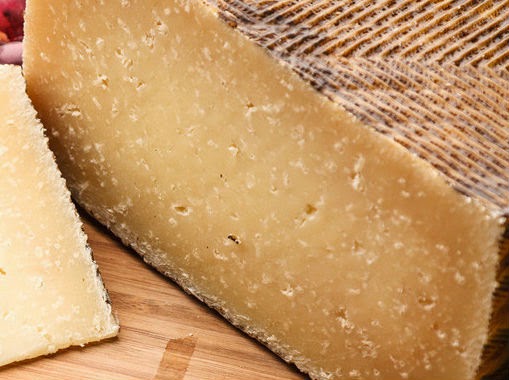 |
| Savoie in the Rhone-Alps region of France. |
Savoie is a region in the French Alps. Though some of the tallest mountains surround the area, beautiful vineyards rest at the base of these peaks. In addition, Savoie is home to two lakes: Lac du Bourget and Lac d'Aiguebelette. The former is the largest and deepest in all of France, and the latter is the purest, least polluted lake in France. The Isere river makes its way through Savoie, feeding the two lakes. Savoie is famous for its apple and pear orchards, its breathtaking scenery, the beautiful vineyards and the cows that produce milk for some of the most distinctive cheese in the country, including Tomme de Savoie.
 |
| Alpine cows sitting in a pasture. |
Tomme is really a family of cheeses, all produced in the Alps of France and in some areas of Switzerland. The cheeses tend to have notes of traditional alpine cheese, but Tomme cheeses are on the stronger side. Skimmed raw cow's milk is used to produce these cheeses, so the fat content is low. Despite being lower in fat, they still melt well and feel rich and creamy on the palate. Each Tomme-style cheese will have a slightly different flavor depending on where the cheese is produced and what the cows are eating at the time the milk is gathered to make the cheese. Sometimes the animals feast on winter hay, but other times fresh grass is on the menu.
Of all the Tomme-style cheeses, Tomme de Savoie is the most famous. The semi-soft, pressed cheese is redolent of the stables, and the more the cheese ages, the more it smells like horse manure. Don't be worried, though, this isn't a bad thing. Many cheeses are described as having rather offensive aromas but still taste good, and some find the strange odor appealing. Beneath the dark, brownish-gray rind that's speckled with patches of white, red and yellow mold sits a supple beige interior, one that has holes similar to Swiss cheese, only these are much smaller.
 |
| Tomme de Savoie has many small eyes speckled throughout the interior. |
 |
| Tomme de Savoie has a thick rind. |
Tomme de Savoie is aged two to four months. As it ages, the flavor intensifies. It's not quite a stinky cheese, but it can develop some similar flavors, especially close to the rind, which is a little scary looking at a glance. The cheese actually looks like it was plucked from the earth, like some kind of dirt-encrusted root vegetable turned into dairy, and it has big earthy, musty flavors to match. Expect a tangy, pungent flavor to jump out right away, revitalizing your entire being. The saltiness and rustic mushroomy notes emerge only after you begin to chew the cheese. There are slight nutty and citrus flavors hiding in there too, but they may take some time to surface. If you let the cheese age past its prime, it will develop an ammonia flavor that will overpower the nicer qualities of the cheese, but it isn't necessarily bad if you're one who likes that kind of punch on the palate.
Traditional rennet is used to make Tomme de Savoie. With the earthy notes, the cheese goes well in a baked spinach pie. Its strong flavors also stand up to cooked meats, dried meats and sausage, but if you prefer, serve it with grapes and bread. The sweetness of the fruit will counter the pungent flavors of the cheese. This cheese is a mountain staple, so don't be afraid to add it to potato dishes or melt it with other cheeses in pasta dishes.
 |
| Brochette de Tomme de Savoie (Tomme de Savoie wrapped in beef carpaccio). |
 |
| Liquor Mart in Boulder has an outstanding selection of wines, beer, champagne and more. |
Kevin Downs, Assistant wine manager at Liquor Mart in Boulder, Colorado, suggests the following pairings for this cheese:
I love a good challenge, and matching wine aromatics with those of horse manure may not be as difficult as one might imagine. “Barnyard” is actually a positive description for some red wines, inferring an earthy rustic character which I love.
The earthiness of this cheese and the fact that is rather low in fat actually brings some red wines to mind. We could actually match it with a Savoie red, Domaine Jean Vullien Mondeuse, at $15.99. Mondeuse grapes, grown throughout this region of France are made into a dark colored, aromatic wine with flavors of tart cherries and dark plums with a generous acid level. The earthness and smokiness of Syrah makes this a really good choice as well, working with flavors of the cheese. Chave’s Offerus St Joseph, for $29.99 would be delicious, but a less expensive southern Cotes du Rhone would work well too. Kermit Lynch’s CDR is spectacular with this cheese and costs about $18.99. For value, Chapoutier’s Belleruche is acceptable for $9.99.
If you want to impress your friends, an ideal wine to accompany this cheese is Alexakis Red, a blend of Kotsifali and Syrah. I love this wine, which I have described as reminding me of a forest floor. It is very rustic and earthy with wonderful fruit….and who would have thought of Greece?
For whites, a good white Cotes du Rhone would work. These are usually combinations of Roussanne, Marsanne and Viognier and are minerally and mouth filling, and are perfect with this cheese. St Cosme James’ Little Basket Press is awesome at $15.99. Yalumba Estates (Australia) makes a 100% Roussanne Eden Valley for $20.99 that is wonderful. Finally, again turning to an unusual source, Royal Tokaji Dry Furmint from Hungary, with its minerally smoky aromatics and flavors is a great choice at only $12.99.
Enjoy this wonderful cheese and a good bottle of wine to go with it. Lize and I are looking forward to exploring new cheeses and wines with you all over the next year. Happy New Year!
 |
| Vin de Savoie pairs well with Tomme de Savoie. |
































